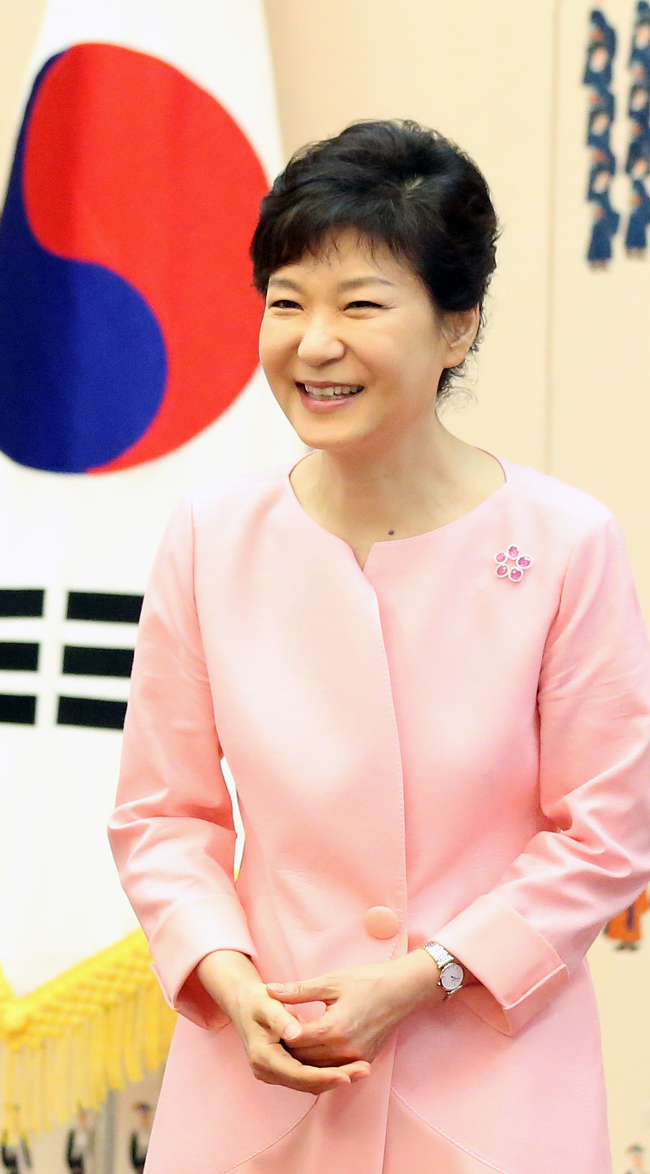President Park Geun-hye’s vision for South Korea’s next phase of economic growth has been epitomized by her “creative economy” mantra, applying the philosophy to all sectors, from conventional to start-up industries, IT, science, R&D, education, culture and the job market.
Yet, six months into Park’s administration, the drive has been constantly criticized by the opposition, experts and even her own party members for being abstract and idealistic.
The concept of fostering creativity as the new engine for economic growth by embedding it in all facets of society and providing necessary government support has long been conceptually understood. But the broad use of the term has left policymakers, business owners and the public confused as to what has actually changed, or what will change, each time Park has trumpeted it as the new solution to everything.
Yet, six months into Park’s administration, the drive has been constantly criticized by the opposition, experts and even her own party members for being abstract and idealistic.
The concept of fostering creativity as the new engine for economic growth by embedding it in all facets of society and providing necessary government support has long been conceptually understood. But the broad use of the term has left policymakers, business owners and the public confused as to what has actually changed, or what will change, each time Park has trumpeted it as the new solution to everything.

The first time Park mentioned the creative economy was on Sept. 28 on the campaign trail in Daegu. To a reporter’s question on her local development plans, Park responded, “The important thing is how we grow and how we create jobs. I believe it is time that we have a creative economy.”
Since then, the creative economy has risen to become Park’s flagship economic pledge, replacing the business-friendly Saenuri Party’s uncharacteristic trumpeting of economic democratization.
Park explained that the creative economy refers to “policies that create new growth, new markets and new jobs, by running an economy based on imagination, creativity and science technology.”
This was in the same vein of her “smart new deal” remarks made on Sept. 14.
“‘Smart’ refers to information technology and ‘new deal’ means creating jobs by fueling domestic demand,” she said. “And I am contemplating how to better describe it in our own language.”
She was, however, not the first to mention the universally popular term during an election in Korea. Her then-rival independent Ahn Cheol-soo, an IT expert, on Sept. 21 had said, “As the knowledge information industry develops and creates creative economy, the other side must fortify welfare through economic democratization by using it as a driving force in order to create a virtuous circle.”
In 2007, then-presidential candidate Moon Kook-hyun of the Renewal of Korea Party had used “creative economy centered on people” to emphasize innovation in labor and small industries.
In 2008, then-chief policymaker Yim Tae-hee of the Grand National Party, the precursor to the Saenuri Party, cited the creative economy as a key to transform an inefficient economic system.
As the creative economy became the state philosophy upon Park’s election, there have been diversified explanations by key administration members.
Deputy Prime Minister Hyun Oh-seok, during his confirmation hearing, said the creative economy was to “aim for convergence and a pacesetting-type economy, and to be based on fair market competition.”
For Choi Mun-kee, during his hearing after being designated as the science, ICT and future planning minister, it was “to change the economy from pursuing (others’) technology to one that sets the pace.”
There were even more abstract explanations.
“To create something that does not exist in the world by using the brain,” is reportedly the description by Yoon Jong-rok, second vice science, ICT and future planning minister.
Perhaps former member of Park’s transition committee and Seoul National University professor Ahn Sang-hoon explained Park’s imagery the best.
“It can be called the second Saemaul Movement in terms of how it will activate the communal economic units,” he said.
Saemaul was a nationwide urban revitalization project led by Park’s father, former President Park Chung-hee, and remains one of the emblematic programs of his rule.
Mindful of the generally cool reception to the philosophy, ministries and the Saenuri Party have since stepped up efforts to better persuade the public and start materializing the vision.
The government on June 5 announced a broad project to realize a creative economy and create an ecosystem for it through six strategies and 24 tasks by investing some 40 trillion won ($35.8 billion) in the next five years such as by creating funds and expanding financial support to start-up companies and R&D, along with easing regulations and developing creativity-centered education material for schools.
Cheong Wa Dae explained the creative economy’s ecosystem via a simplified diagram likening it to a blossoming flower.
Based on the “land” of science, information and communication technology, a “seed” of an individual’s creative imagination finds roots, branching into “stems” of integration and convergence of industries and culture, to bloom into the “flower” of new products and services. As examples of the new products, it cited GPS-installed shoes and games using brainwaves. It described high-quality jobs as the “fruit” from the plant, “watered” by the government’s protection of intellectual property, reasonable regulations, financial and tax support and a fair competition system.
By Lee Joo-hee (jhl@heraldcorp.com)
-
Articles by Korea Herald



















